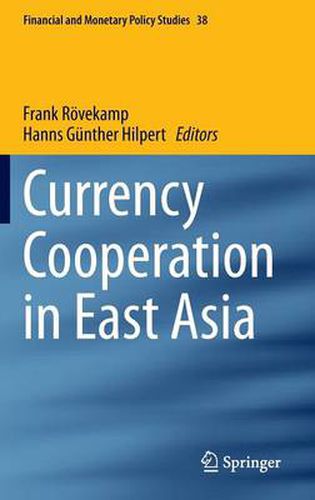Readings Newsletter
Become a Readings Member to make your shopping experience even easier.
Sign in or sign up for free!
You’re not far away from qualifying for FREE standard shipping within Australia
You’ve qualified for FREE standard shipping within Australia
The cart is loading…






This title is printed to order. This book may have been self-published. If so, we cannot guarantee the quality of the content. In the main most books will have gone through the editing process however some may not. We therefore suggest that you be aware of this before ordering this book. If in doubt check either the author or publisher’s details as we are unable to accept any returns unless they are faulty. Please contact us if you have any questions.
This book explores the opportunities and limits of currency cooperation in East Asia. Currency issues play an important role in the region. The Asian crisis of the late 90s was rooted in deficient currency arrangements. The Chinese RMB is not freely convertible yet, but policymakers in China nevertheless aim for a more international role of the Chinese currency. The recent change of direction in Japanese monetary policy caused a drastic depreciation of the Yen and led to warnings against a possible currency war , thus demonstrating that currency issues can also easily lead to political frictions. Most trade in and with the East Asian zone on the other hand is still conducted in US $. Against this background different modes of currency cooperation serve the goal of smoothing exchange rate fluctuations and capital flows. They are an important element to promote financial stability and to reduce the transaction cost for foreign trade or investment. The contributions of this book analyze the environment and design of currency cooperation in East Asia and their effects from a macro-and microeconomic viewpoint.
$9.00 standard shipping within Australia
FREE standard shipping within Australia for orders over $100.00
Express & International shipping calculated at checkout
This title is printed to order. This book may have been self-published. If so, we cannot guarantee the quality of the content. In the main most books will have gone through the editing process however some may not. We therefore suggest that you be aware of this before ordering this book. If in doubt check either the author or publisher’s details as we are unable to accept any returns unless they are faulty. Please contact us if you have any questions.
This book explores the opportunities and limits of currency cooperation in East Asia. Currency issues play an important role in the region. The Asian crisis of the late 90s was rooted in deficient currency arrangements. The Chinese RMB is not freely convertible yet, but policymakers in China nevertheless aim for a more international role of the Chinese currency. The recent change of direction in Japanese monetary policy caused a drastic depreciation of the Yen and led to warnings against a possible currency war , thus demonstrating that currency issues can also easily lead to political frictions. Most trade in and with the East Asian zone on the other hand is still conducted in US $. Against this background different modes of currency cooperation serve the goal of smoothing exchange rate fluctuations and capital flows. They are an important element to promote financial stability and to reduce the transaction cost for foreign trade or investment. The contributions of this book analyze the environment and design of currency cooperation in East Asia and their effects from a macro-and microeconomic viewpoint.